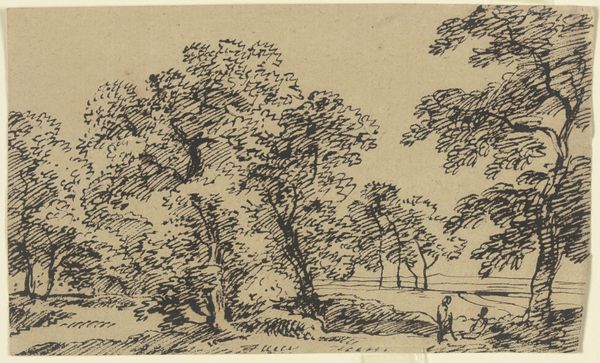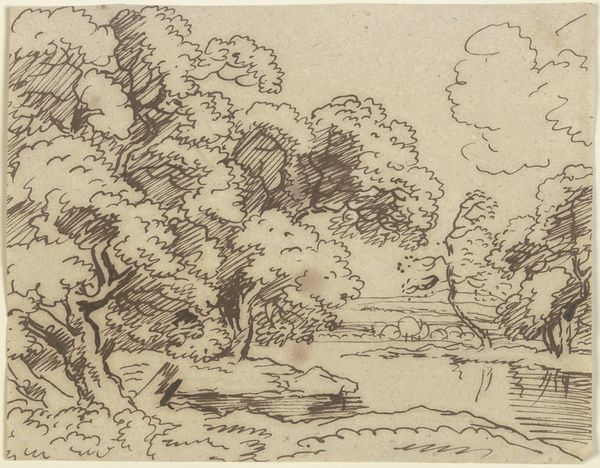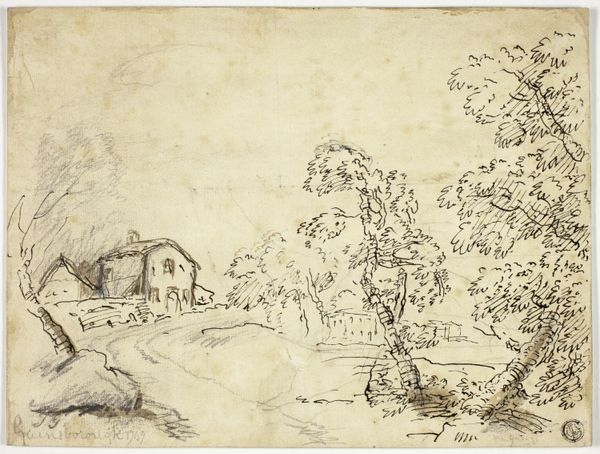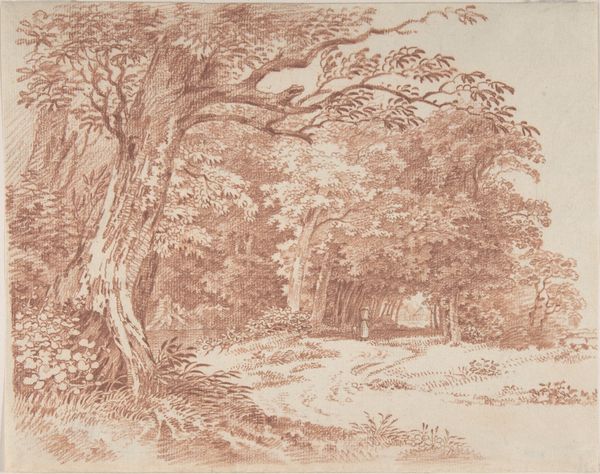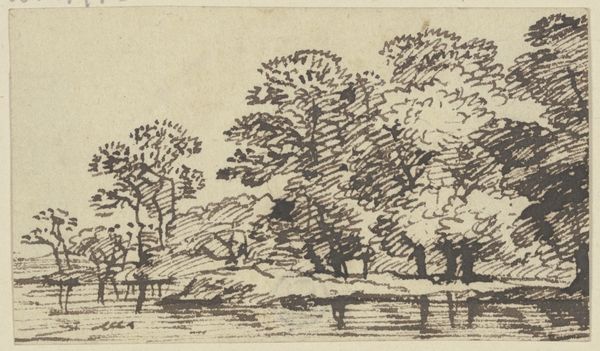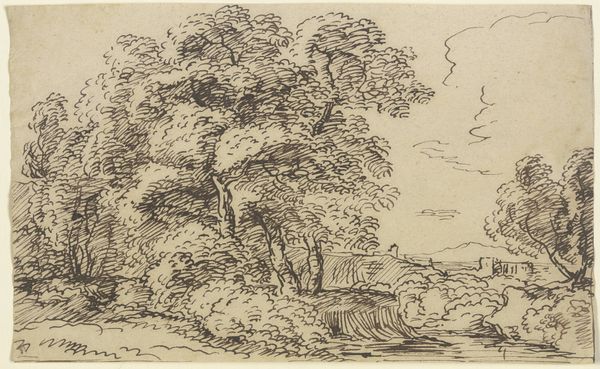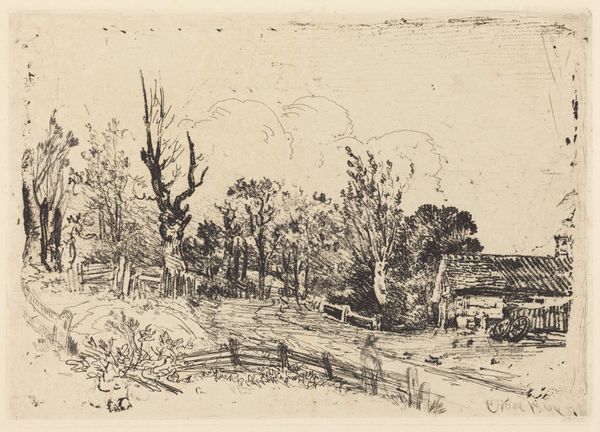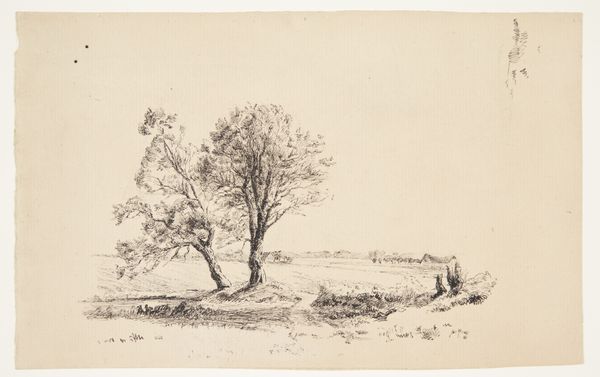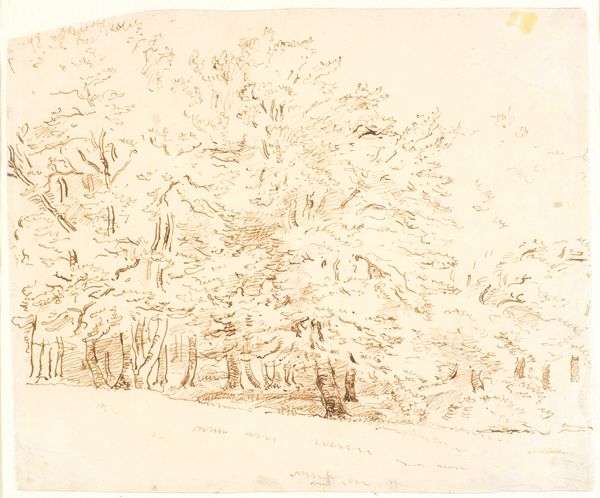
Landscape with Cottages under Tall Trees ("The Puff of Wind") 1650 - 1652
0:00
0:00
drawing, ink
#
drawing
#
ink painting
#
dutch-golden-age
#
landscape
#
etching
#
ink
Dimensions: 116 mm (height) x 203 mm (width) (bladmaal)
Editor: Here we have Rembrandt van Rijn's "Landscape with Cottages under Tall Trees," also known as "The Puff of Wind," created sometime between 1650 and 1652 using ink. The drawing is striking – almost stark. It’s the trees that grab my attention, especially given their prominence in what's considered a landscape. What do you see in this piece, especially in relation to how it was made? Curator: The means of production immediately strike me. Ink, typically a tool for writing and record-keeping, is here elevated to create a compelling landscape. Look at the layering. Rembrandt isn't just depicting a scene; he’s using the material qualities of ink – its flow, its capacity for variation in tone – to convey atmosphere, and that breeze in the trees. How does this subvert your understanding of drawing at the time? Editor: I see what you mean. It's almost as if he’s treating the ink as a sculptural material, building up textures and forms, rather than simply outlining them. The ink suggests volume and movement, capturing a fleeting moment. So, what were the implications of this? Curator: Exactly! Think about the art market then. Paintings were highly valued and collaborative processes more respected, whereas drawing was closer to craft – an individual, almost mundane practice. By investing so much skill and artistic intention into it, Rembrandt challenged the hierarchical structure, granting a humble medium a significant expressive power. Did landscape come with its own values at the time, its own place in a system? Editor: Definitely. I think he blurred the lines between the fine arts and what was considered simple craft. Also landscape represented something… Curator: Precisely! Reflecting the changing relationship between humans and nature during the Dutch Golden Age, but doing so using the directness and availability of ink as a raw material for artistic production. Editor: That is really insightful! Considering his artistic choice provides such an engaging narrative that challenges our view of the material and art itself. Curator: Yes, we need to remember to read closely every artistic creation. Thank you for walking through this with me, I see the materiality of art clearer now!
Comments
statensmuseumforkunst almost 2 years ago
⋮
This drawing is not signed. Nor is it dated. Even so, no scholars of Dutch art have ever questioned that it was made by Rembrandt around the mid-17th century. How can we know that the drawing is made by Rembrandt? Everything supports this theory: the mood, the style, the manner of the line, even though the brown ink has been applied to parchment, a highly unusual medium for the artist. Among the approximately 1100 drawings attributed, more or less accurately, to Rembrandt, only four others were made on parchment. One of these (housed in Amsterdam) shows a view of the river Amstel seen from Blauwbrug. Like this drawing it has rounded top corners, but it is both longer and wider. The two drawings share common features in terms of both technique and style, so it seems natural to view them as companion pieces: the open, light river landscape offset against the dense, dark group of trees that close around the cottages by the stream; morning and night. The making of the drawing Before Rembrandt composed his nocturne featuring the unequal struggle between light and darkness, he must have toned his parchment with a light brown wash that conjures up an illusion of a cloudy sky at sunset. He then drew the scene itself. Occasionally he would brighten up the darkest areas by scratching at the ink with the tip of his brush handle, laying bare the parchment below and allowing fresh bursts of light to break through - as though a breath of wind passes through the landscape.
Join the conversation
Join millions of artists and users on Artera today and experience the ultimate creative platform.

